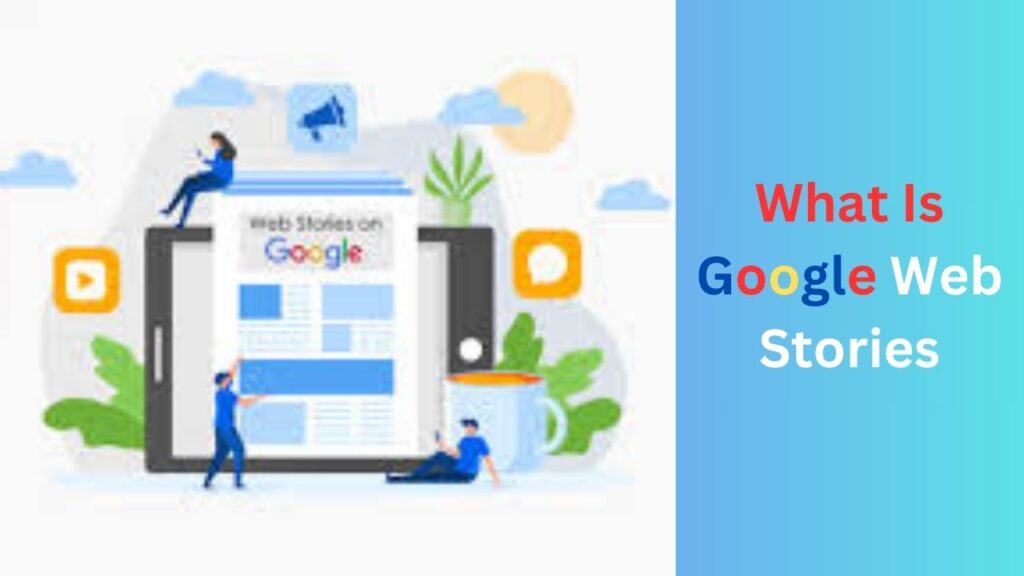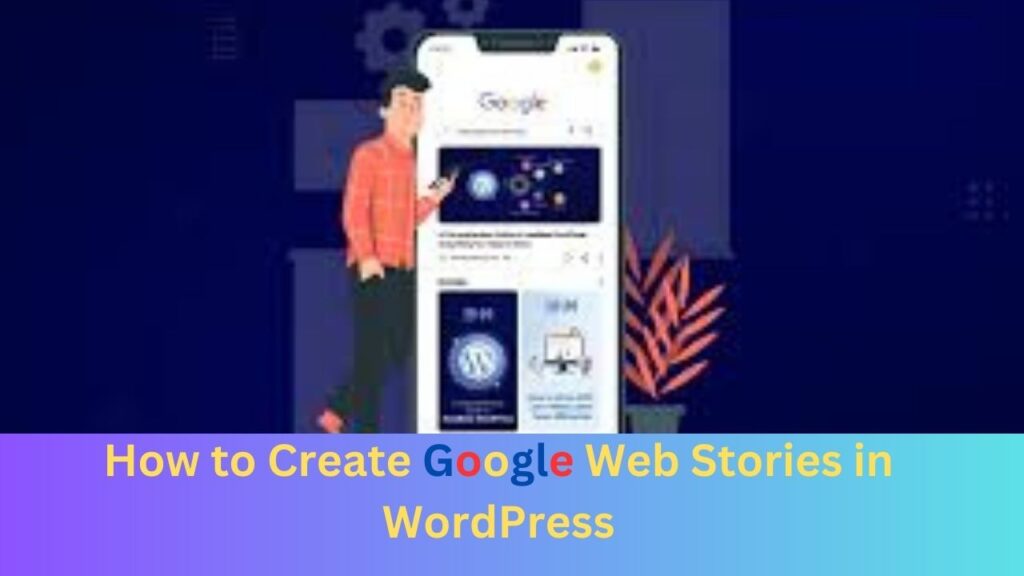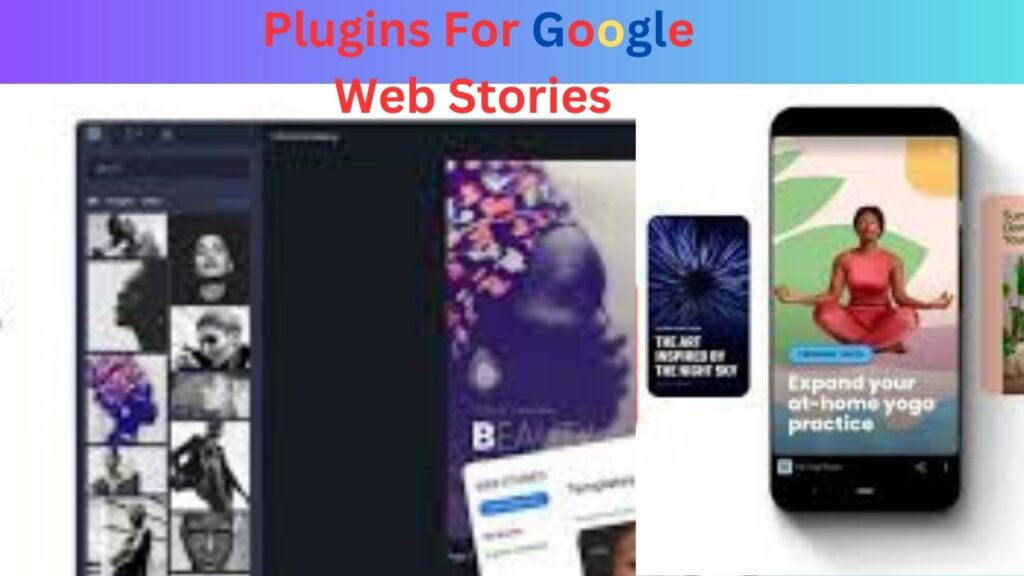Table of Contents
ToggleWhat Is Web Stories And Everything Know About It
What is web stories and everything know about it. Do you also like to see people’s stories on social media or do you like to put your own stories.
Keeping this behavior of people in mind, Google also launched a new platform in the year 2022, which is known as Google Web Stories.
What is Web Stories? Today in this blog we will know everything about Web Stories in detail, stay with us till the end.
What Is Web Stories?

Web Stories are a visually immersive and interactive storytelling format designed for the web, similar to the “Stories” feature on social media platforms like Instagram and Snapchat.
They provide a full-screen experience that combines text, images, videos, and animations to create engaging narratives. Users can navigate through Web Stories by tapping to move forward or backward, making the content easily consumable and interactive.
This format is specially designed for mobile users who want to get visually rich, immersive, and straightforward information in less time.
If you also want to be a part of this exciting platform and are wondering “What is Google Web Stories” or “How to make Google Web Stories”, then read this blog till the end.
How to Create Google Web Stories in WordPress

WordPress has an easy and user-friendly process to create Google Web Stories, by following which you can create great stories. Let us explain to you step-by-step how you can create Google Web Stories in WordPress:
1. Install and Activate the Web Stories Plugin
- Go to your WordPress dashboard.
- Navigate to Plugins > Add New.
- In the search bar, type “Web Stories.
- Locate the official Web Stories plugin by Google in the search results.
- Click the Install Now button
- After the installation is complete, click the Activate button to enable the plugin on your site.
2. Set Up the Web Stories Plugin
After activation, go to Stories > Dashboard in your WordPress dashboard. The plugin will guide you through a setup wizard to configure basic settings. Follow the on-screen instructions to set up your story preferences, such as default page templates, font styles, and colors.
Navigate to Stories > Settings to adjust settings like story length, featured content, and display options. Here, you can also set your logo, add social media links, and customize the look and feel of your stories.
3. Create a New Web Story
In your WordPress dashboard, navigate to Stories > Add New. You’ll be taken to the Web Stories editor, a user-friendly interface similar to page builders or design tools.
Use the “+” button in the editor to add new pages to your story. Each page can contain a mix of text, images, videos, and other elements.
Text: Click the “T” icon to add text boxes. Type your content and adjust the font, size, color, and positioning as needed.
Images and Videos: Click the media icon to upload or select images and videos from your WordPress media library. Resize and position them on the page.
Shapes: Use the shapes icon to add customizable shapes to your story pages.
Stickers: Add stickers or call-to-action buttons to engage viewers and prompt interactions.
Customize the design of each page using the options in the right-hand panel. Adjust background colors, add animations, and set the duration for each page.
Arrange the order of your pages by dragging and dropping them in the desired sequence in the editor.
4. Customize the Story Design
In the Web Stories editor, utilize the design panel on the right side to fine-tune the appearance of each element on your story pages. elect a page and choose a background color or image. You can set a solid color, gradient, or use an image from your media library. Ensure the background complements your content for better readability and visual appeal.
Click on any text element to customize its font, size, color, and alignment. Use the typography options to ensure your text is clear and engaging. Consider using contrasting colors to make the text stand out against the background.
Add animations to text, images, and other elements to create dynamic and engaging pages. Select an element, then choose from various animation options like fade in, slide, zoom, etc.
Define how long each page will be displayed. In the design panel, set the duration for each page to ensure a smooth viewing experience.
Include interactive elements like links, call-to-action buttons, or stickers to engage your audience. Customize these elements to prompt viewers to take specific actions, such as visiting a website or following a social media page.
Use the preview button to see how your story looks on different devices. Make necessary adjustments to ensure your story is visually appealing and functional across various screen sizes.
5. Share Your Web Story
Once you’re satisfied with your Web Story, click the Publish button in the editor. After publishing, you will see the direct URL of your Web Story. You can copy this URL to share it on social media, in emails, or anywhere else you want to promote your story.
Alternatively, you can use the Web Stories block. In the post or page editor, add a new block and search for the Web Stories block. Select your story from the list of published stories.
Use the direct URL of your Web Story to share it on social media platforms like Facebook, Twitter, and LinkedIn. Consider creating a short promotional post or video to accompany the link and attract more viewers.
Benefits Of Google Web Stories

Google Web Stories offer several benefits that can enhance your digital marketing and content strategy. Next we will know in detail what are the benefits of web stories, stay with us till the end.
1. Increased Visibility
Google Web Stories significantly enhance visibility by integrating seamlessly with Google Search and Google Discover. When users perform searches or browse through Discover, Web Stories have the potential to appear in prominent positions, catching their attention with visually striking and interactive content.
This increased exposure can drive more traffic to your website, as Web Stories stand out in search results and offer a dynamic, engaging format that encourages clicks.
Because they are mobile-optimized, they reach users on smartphones and tablets, where they are most likely to engage with short, visually compelling content. By leveraging Web Stories, you can amplify your content’s reach and capture a larger audience.
2. Enhanced User Experience
Google Web Stories are designed to provide a superior user experience, particularly on mobile devices. Their format emphasizes rich visuals, including images and videos, combined with animations and interactive elements, creating an immersive and engaging viewing experience.
The full-screen, swipeable design ensures that content is easily consumable, offering a seamless flow that keeps users engaged without distractions. This mobile-centric approach caters to modern browsing habits, making it easy for users to interact with and enjoy your content on the go.
By delivering a captivating and user-friendly experience, Web Stories help maintain viewer interest and encourage repeat visits.
3. Improved Brand Awareness
Google Web Stories provide a powerful platform for enhancing brand awareness through creative and visually appealing storytelling. With customizable design options, you can craft stories that align with your brand’s identity, using distinctive colors, fonts, and imagery to reinforce your brand message.
This engaging format allows you to showcase your products, services, or company values in a compelling way, helping to build a stronger connection with your audience. By consistently creating and sharing Web Stories, you can increase your brand’s visibility, foster brand recognition, and establish a memorable presence in the minds of your viewers.
4. Increased Engagement and Interaction
Google Web Stories are designed to captivate users with their interactive and visually dynamic format, leading to increased engagement and interaction.
By incorporating elements like clickable links, call-to-action buttons, and swipe-up features, Web Stories encourage viewers to take meaningful actions, such as visiting your website or exploring more content.
The short, visually rich format also keeps users’ attention, making it more likely they will interact with the content and follow through on prompts.
This enhanced level of interactivity not only boosts user engagement but also drives higher conversion rates, helping you achieve your marketing goals more effectively.
5. Analytics and Insights
Google Web Stories provide valuable analytics and insights that help you understand how your content performs and how users interact with it. By utilizing tools such as Google Search Console and other analytics platforms, you can track key metrics like views, engagement rates, and click-through rates.
This data allows you to evaluate the effectiveness of your Web Stories, identify which elements resonate most with your audience, and pinpoint areas for improvement. Armed with these insights, you can refine your content strategy, optimize future stories, and make data-driven decisions to enhance your overall digital marketing efforts.
6. Enhanced SEO Benefits
Google Web Stories can bolster your SEO strategy by adding rich, multimedia content to your site. This visually engaging format not only enhances the user experience but also increases the likelihood of your content appearing in Google Search and Discover results.
By incorporating relevant keywords, optimizing media, and ensuring your stories are mobile-friendly, you can improve your site’s visibility and search engine rankings. Web Stories also contribute to a more dynamic and interactive site, which can positively impact user engagement metrics—factors that search engines consider when ranking content.
7. Content Repurposing
Google Web Stories offer a versatile platform for repurposing existing content into a fresh and engaging format. You can transform blog posts, social media updates, or product information into visually dynamic Web Stories, breathing new life into your content and reaching a broader audience.
This approach allows you to present your material in a more interactive and visually appealing way, maximizing its impact and longevity. By repurposing content into Web Stories, you can efficiently leverage your existing assets, drive more engagement, and ensure that your messages are effectively communicated across different formats.
Top Three Plugins For Google Web Stories

1. Google Web Stories Plugin
This is the official plugin developed by Google for creating Web Stories. It offers a user-friendly interface with drag-and-drop functionality, allowing you to easily design and publish stories.
Simplifies the process of adding and arranging text, images, and videos. Provides pre-designed templates to get started quickly. Tracks performance through Google Search Console. Ensures stories are optimized for mobile viewing.
2. Make Story Plugin
The Make Stories plugin is a comprehensive tool for creating and managing Google Web Stories within WordPress. It is designed to offer a seamless experience, combining ease of use with powerful customization options.
This Web Story Plugin focuses specifically on visuals. Using the Make Story Plugin, you can create visually stunning stories that include rich media integration such as videos, images, and gifs. It is very attractive in terms of user interface and is also suitable for non-technical users.
3. Newsroom Ai
The Newsroom AI plugin is designed to help content creators and publishers easily create, manage, and publish Google Web Stories. It offers a range of tools to produce visually engaging stories that can be integrated seamlessly into your WordPress site.
Newsroom AI is an advanced web story creation tool that helps publishers create targeted stories. It includes AI-driven insights and analytics features that help content creators optimize stories according to their audience’s preferences.
These plugins not only help you create Google Web Stories but also optimize your stories according to Google guidelines, thereby improving your reach and engagement.
Conclusion
Google Web Stories present an innovative way to enhance your digital content strategy, offering benefits like increased visibility, enhanced user experience, improved brand awareness, and higher engagement and interaction.
By utilizing plugins such as Web Stories by Google, Thrive Themes’ Storytelling, Create Web Stories by WP Story, and Newsroom AI, you can easily create, customize, and share compelling stories that captivate your audience.
These tools provide intuitive interfaces and powerful features, allowing you to design visually stunning and interactive stories that stand out in search results and on social media platforms. By embedding and sharing your stories, you can drive more traffic to your site, improve SEO, and make the most of your existing content through repurposing.
Incorporating Google Web Stories into your content strategy can help you achieve your marketing goals more effectively, providing a dynamic and engaging way to connect with your audience and build a stronger online presence.
To make Google Web Story visually appealing, you need to understand various methods of digital marketing. But the question is how to learn the methods of digital marketing.
For this, join Rosie Digital, where I teach you all the latest techniques of digital marketing in 30 days. Today many people are associated with us, who are learning digital marketing from me and creating new income sources for themselves. To join us, click on the link given below and register for my Free Webinar.
